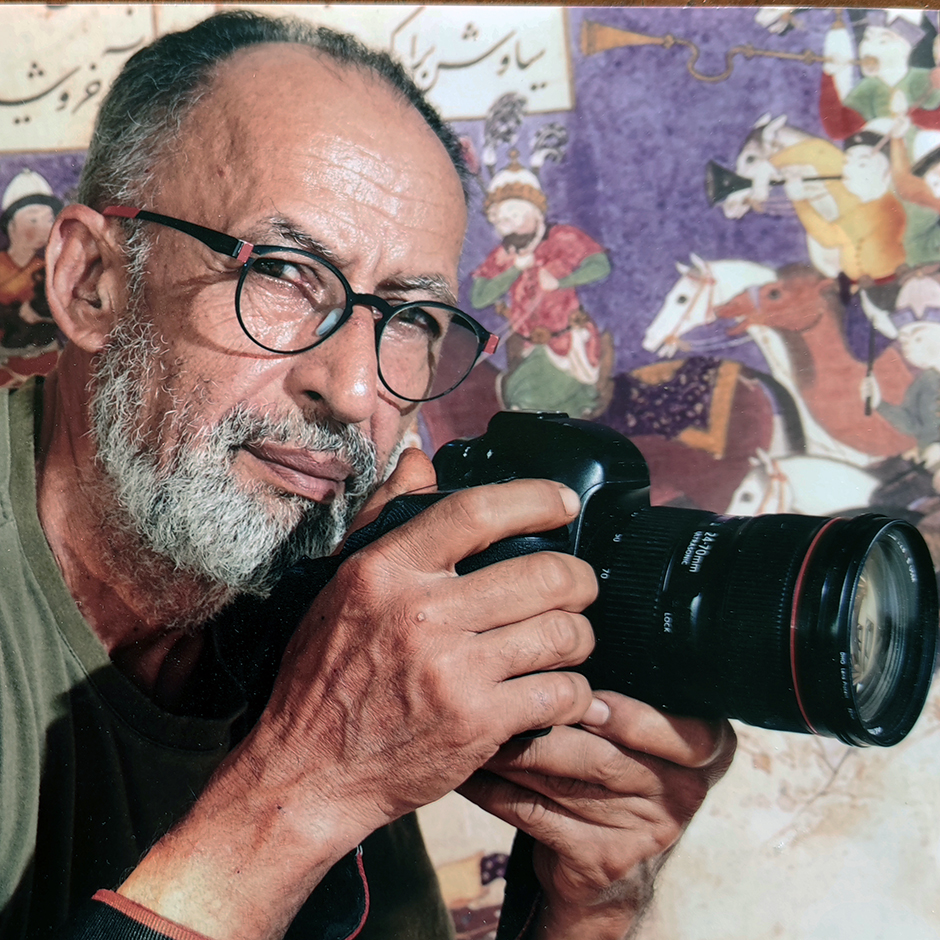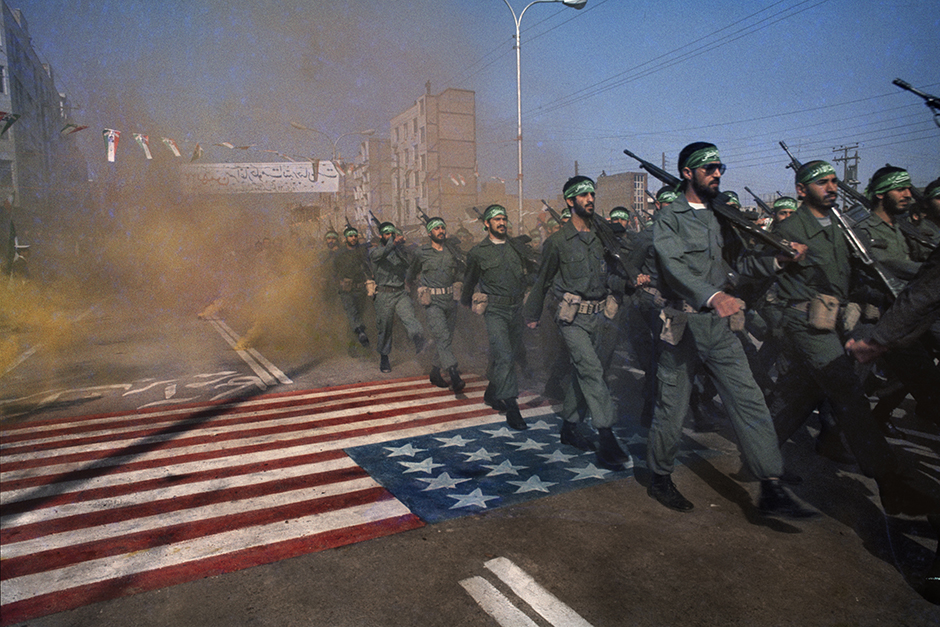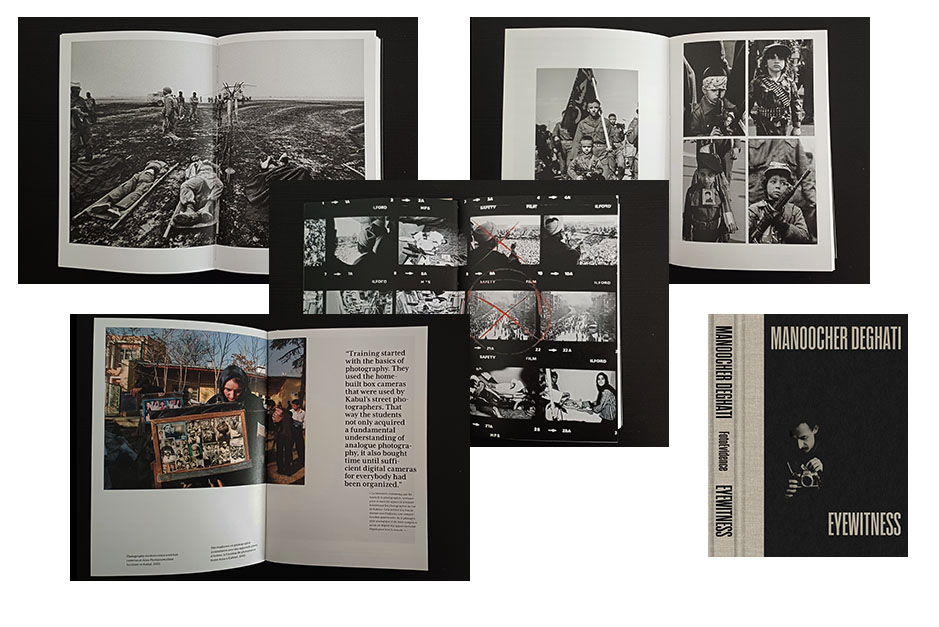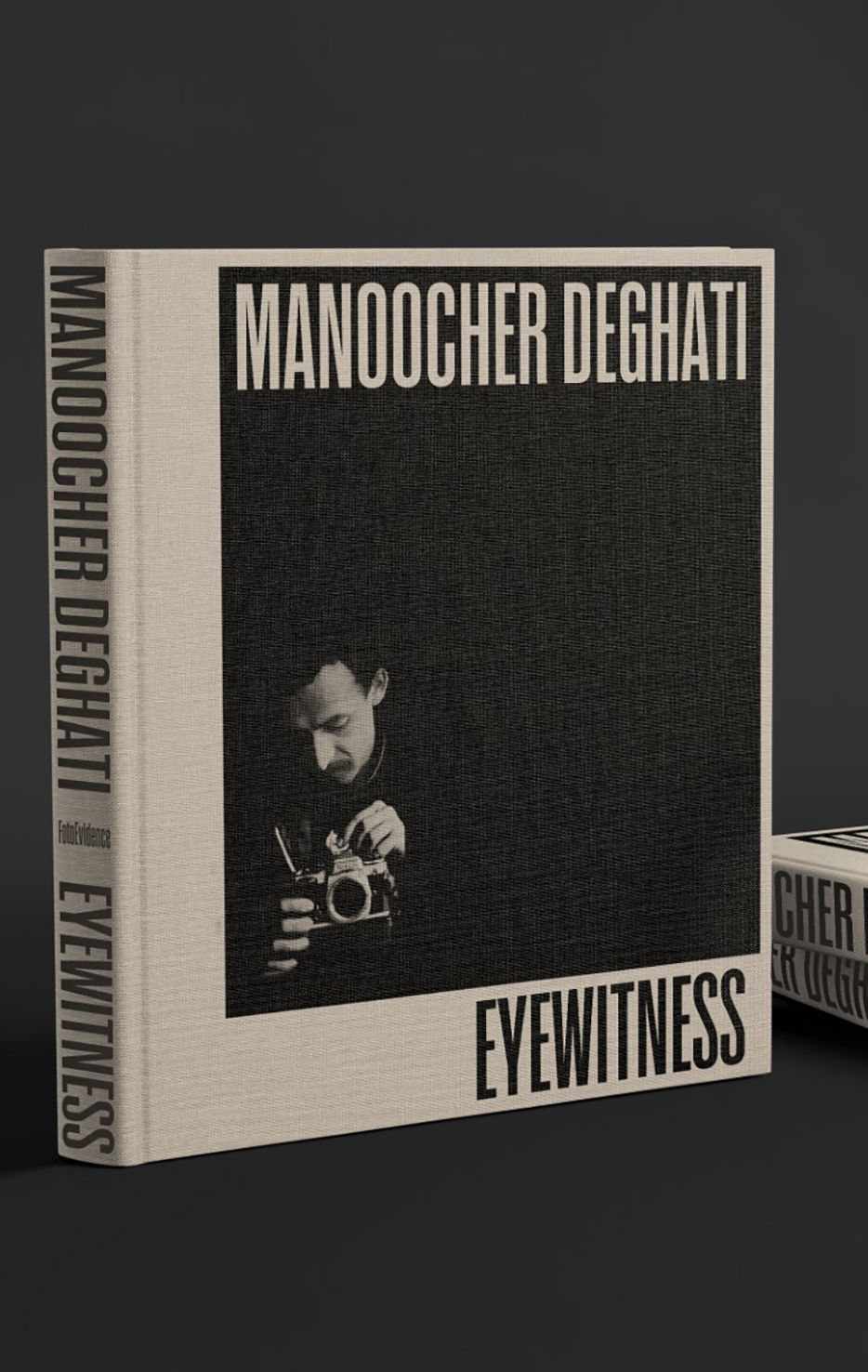
Manoocher Deghati
Interview by
FotoEvidence
Iraqi prisoners of war are forced to pray with a portrait of Khomeini. One prisoner refused to pray, 1982 Photo: Manoocher Deghati
Manoocher Deghati Bio
Manoocher has been traveling the world throughout his life, having lived in 12 countries on four continents, photographing life and death, war and peace, hap-piness and grief, revolutions, natural disasters and even politicians shaking hands for the cameras.
At a young age, he was able to get to know Western music, Russian literature and Italian cinema. Especially the Italian neo-realism had a deep impact on him. This is why he decided to study cinematography in Rome. When the revolution in Iran sparked off, he returned to his home country to witness these dramatic events, working for major international photo agencies and magazines such as Agence France Press, Sipa, Black Star, Times, Newsweek etc. As from the very first day of capturing the events, he was almost shot by a soldier. In the fol-lowing years, things got wor¬se: beaten, inter¬rogated on gunpoint, cameras bro-ken, press card confiscated; but none of this stopped him from believing in the importance of photojournalism as a tool of in¬formation for positive changes. He was able to photograph the Iran-Iraq War until 1985 when he had to leave Iran after receiving death threats by the authorities, remaining in exile until to-day.
Manoocher worked as chief photographer for Agence France Presse in Central Ameri¬ca during years of war, reconciliation and peace. Returning to the Middle East, he covered similar political and social issues there. After being shot and severely wounded by an Israeli sniper in Ramallah, he was taken to Paris where he stayed 18 months in the Invalides military hospital for recovery.
After the fall of the Taliban, he joined his brother Reza in Ka¬bul where he had founded AINA, an NGO intended to train Afghans in all branches of journalism. Manoocher founded the photojournalism in¬stitute withing AINA and trained the first Afghan photojournalists, among them several women – unthinkable for many at the time. Moving on to Nairo¬bi he created the photo department for the United Nations IRIN News Agen¬cy, documen¬ting mainly social and environmental issues around the globe, and training local pho¬tographers from disadvantaged neighbor-hoods. In 2011 he created the new Middle East photo desk for the Associated Press, organizing the coverage of 20 coun¬tries from Afghanistan to Libya. Hopes for democracy and liberty during the Arab Spring were replaced by destruction, dictatorship and fundamentalism. What happened was like a déja-vu from the events in Iran. Since a few years he is now freelancing for major magazines like National Geographic from his new home base in Italy.
What is the book Eyewitness about?
EYEWITNESS is a photo book that comes with a biographical novel about my journey as a photojournalist, capturing images and tales of humanity amid conflict and turmoil around the world. It reflects not just the visual stories of war, revolutions, and social unrest but also the personal experiences and challenges I faced while documenting history. The book is a testimony to the power of photography in documenting the truth and raising awareness about global issues.
When did you first know that you wanted to be a photojournalist?
I realized my passion for photography during my teenage years in Iran. Photography became a way to explore and document the world around me, especially during times of political change. Witnessing the impact of imagery on people's understanding of events inspired me to pursue it as a career. An important time in my life was a moment during the Iranian Revolution, when I was shot at because I was carrying a camera. The thought that photos could install so much fear in the powerful only affirmed my determination.

Ahwaz, Iran 1983
Pasdaran march over a US flag in Ahwaz, in 1983, on the 3rd anniversary of the Iranian revolution. Photo: Manoocher Deghati
What led you to leave Iran, and how did it feel to live in exile?
As someone actively documenting the atrocities of the Islamist mullah regime in Iran, my work became increasingly dangerous. I was repeatedly beaten, arrested, my camera smashed. In 1985, I received a warning that my name was on a blacklist and I had to leave Iran to safe my life. Living in exile was bittersweet—it allowed me to work internationally, but I also felt a deep sense of loss and separation from my homeland.
What was the most difficult experience you had while covering social unrest around the world?
There were countless moments of danger and emotional strain, but one of the hardest experiences was witnessing the suffering of innocent civilians, particularly children, in war zones. These moments stay with you forever, and the helplessness you feel can be overwhelming.
Many conflict photographers experience symptoms of PTSD. How did you keep yourself grounded during periods of stress and violence?
It was not easy, but I found solace in my family and in the purpose of my work—believing that my images could drive change. I also took breaks when possible, to reconnect with nature or focus on personal projects, which helped me maintain perspective.
As an editor, you led the Associated Press journalists’ team who won the Pulitzer Prize for breaking news photography documenting the civil war in Syria. You also served as an editor for the book The Eyes of Earth by Iranian photographer Solmaz Daryani. Was this a satisfying experience compared with being in the field as a photojournalist?
Both experiences were fulfilling in different ways. Editing allows you to guide and shape narratives, ensuring that stories are told with impact and integrity. However, being in the field is a unique experience—it's raw, immediate, and deeply personal. Each role has its own rewards and challenges.
When you look back over your own career, how do you think photojournalism has changed since you started?
Photojournalism has evolved significantly with the advent of digital technology and social media. While these advancements have made it easier to share stories instantly, they've also introduced challenges like misinformation and the oversaturation of images. The profession still relies on the commitment to truth and ethics, which remains timeless.
Ursula Janssen, what inspired you to write the biographical novel about Manoocher’s life?
Eyewitness is not my first novel; as an archaeologist I’ve mainly been writing historical fiction. When looking for a new subject, I realized that I had a perfect subject right in front of me, true stories more intriguing and more fantastic than fiction. And they needed to be told. Then came the Covid-19 lockdown in Italy, where we live, and we had plenty of time. Manoocher told me his stories, some of which I had heard before, others were new to me. I took notes and shaped them into a biographical novel.
How did you two meet?
Please let me reply with a few lines from Eyewitness:
Syria, 2002
He had to pack. He wouldn't need much. National Geographic would be sending the film rolls along with the American colleagues. What was the weather like in Syria this time of the year? He dialed the Syrian phone number Kent had sent him. It rang a few times before a young woman answered the phone. She answered with an “Allo” that could have been Arabic, English, or French.
“Hi, am I talking to someone from the archaeologists' team?” he asked in English.
“Yes, this is the Qatna expedition. I'm a member of the team; my name is Ursula.”
“Hi, my name is Manoocher Deghati. National Geographic is sending me as a photographer to your excavation. I'll be arriving from Kabul next Tuesday and wanted to ask about the weather. Because here it's freezing.”
“Here too, unfortunately. It’s already snowed once. And our excavation house isn’t really warm either.”
“Thanks, I'll pack warm clothes in that case.”
“I would definitely recommend that.”
“See you on Tuesday then!”
“See you on Tuesday!”
And so I had, without realizing it, talked to my future husband for the first time. As a matter of fact, our team from the University of Tübingen had indeed made a great discovery: Bronze Age royal tombs, four chambers hewn into the rock beneath the royal palace that had been destroyed by the Hittites around 1,400 BCE, thus sealing the crypt below, safeguarding it from grave robbers. The subterranean chambers were accessible via a wooden ladder that we had placed into the horizontal shaft that led into the antechamber, where two seated statues of kings guarded the entrance. It was like something from a movie.

Published by FotoEvidence in 2024
Eyewitness by Manoocher Deghati Photo editor: Sarah Leen Book design: Joao Lineu and Fernanda Fajardo

